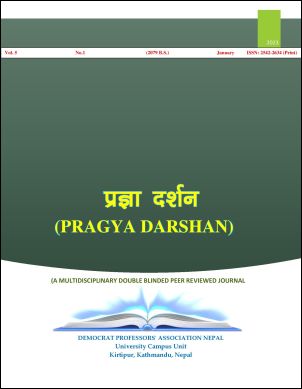Demographic Effect on Engaged Learning Practice of Undergraduate Students
DOI:
https://doi.org/10.3126/pdmdj.v5i1.52355Keywords:
Chemistry, Dimensions of engagement, DemographyAbstract
Student engagement is viewed as learners’ attention, interest, investment, and effort students expend in their work of learning. Studies and research in the field of education have revealed that students' engaged learning methods in science are increasingly focusing on aspects like behavioral, cognitive, and emotional engagement. Therefore, the purpose of this study was to identify engaged learning and demographic influences on such practices. The study was carried out with a sample of. A Likert scale-type questionnaire of 30 items was employed with 88 undergraduate students studying chemistry on two campuses of Kathmandu. Students were found to have better engagement in all dimensions of engagement. They showed higher behavioral engaged learning practice as compared to other two dimensions. No differences were established between behavioral engagement and gender, ethnicity, and religion. Similar findings were established for cognitive and emotional engagement practices. The implications of the findings were examined, including their value for future researchers in the same field of study, science teachers, and policymakers.




